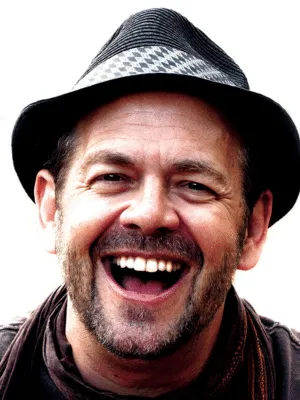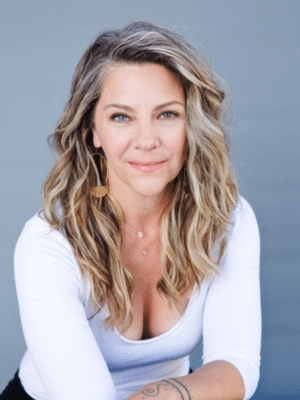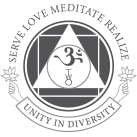Sivananda Bahamas Blog
Expand Your Horizons …
Our Blog
Interview with Dave Stringer & Suzanne Sterling: The Transformative Power of Chanting and Sound Healing
Join us for an enlightening conversation with Dave Stringer and Suzanne Sterling, both internationally acclaimed musicians and sound healers. In this interview, they share their deep insights into the transformative power of chanting and sound healing, exploring how these ancient practices can awaken a deeper connection to the self and the universe. From their personal experiences in the healing arts to the powerful vibrations of sacred mantras, Dave and Suzanne offer a unique perspective on how music and sound can elevate our consciousness and support spiritual growth.
Question: How do you engage participants in a way that brings them into a deep transformative state?
Dave Stringer: When I lived in India at the ashram, I realized that creating a space where people feel at ease and comfortable is essential. It’s similar to theater: it’s not only about the art but how it’s presented. By creating a space where people feel part of the experience, they are more likely to engage with it. I focus on making chanting accessible for everyone, such as projecting the mantras so everyone can follow along. This fosters a sense of participation and shared focus, which brings people into a deeper connection with the practice.
Chanting is unique because it’s not passive—it requires active engagement. As we sing together, the barrier between the performer and the audience blurs. The act of singing is a shared experience, one that connects us not only to each other but also to something greater. The more we participate, the deeper our connection becomes.
Suzanne Sterling: I agree with Dave that creating a safe space for surrender is key to transformation. Sound and silence play important roles in guiding people. I use sound to engage, but silence allows participants to process what’s happening. It's during these silent moments that transformation often begins. I also believe in making people feel seen and heard. It’s about helping them embrace their own voices and emotions, contributing to the collective energy. The work Dave and I do is a constant exchange of energy that fosters creativity and transformation.
Question: What would you tell someone nervous about joining the workshop?
Dave Stringer: I often reassure people that the goal is not to be perfect but to participate. Singing in tune in a group can actually help others find their rhythm, and the collective sound becomes something greater than individual voices. The environment we create is supportive, and no one is singled out. We all contribute to the group energy. In fact, the more you participate, the more you experience the transformation that comes with it.
Singing in a group is a unique experience. You’re not simply performing; you’re part of something larger. The act of collective creation brings healing, and it shows how we can all contribute to a shared, positive energy. This is an experience of unity, not just in sound but also in spirit.
Suzanne Sterling: I tell people not to worry about being perfect. The whole point of kirtan is to embrace the imperfection of the moment and feel the freedom in that. It’s not about standing out—it’s about blending your energy into the collective.
Everyone’s voice adds to the whole. That’s what makes it beautiful. The group energy is what makes the experience so transformative. You can let go of fears of judgment and simply enjoy being part of something greater than yourself.
Question: How do you help people to connect to something bigger than themselves in this practice?
Dave Stringer: For me, it’s about creating an environment where people can drop their defenses and connect to something greater. Singing together creates a shared energy that transcends the individual. It’s an act of surrendering to the collective sound, which allows us to access a deeper connection to ourselves, each other, and the divine. When people sing together, they begin to let go of the need to be perfect and allow themselves to be part of something greater. This connection is not just intellectual; it’s visceral and emotional.
Suzanne Sterling: Absolutely. Kirtan is a way of stepping into the flow of life and letting go of the need to control. It’s about aligning ourselves with the greater rhythm of the universe. The sound we create together becomes a bridge to that higher state. It’s a tool for breaking through the ego and connecting with something larger, whether that’s a sense of the divine, nature, or simply the collective human experience.
Question: What do you hope participants will take away from your workshop, and how can they integrate the experience into their daily lives?
Dave Stringer: I hope that people leave feeling more connected to themselves and to others. The experience of singing and being part of something larger can foster a sense of joy, and I want people to feel deserving of that joy. Many people feel they don’t deserve to be happy, but the truth is, we all deserve to experience life from a place of joy. This experience can help shift that perspective, and once you feel it, it becomes easier to make joy a part of your daily life.
I also want people to understand that the power of collective participation can be brought into everyday life. When we experience this deep connection, we see that the energy we carry can transform our relationships and the world around us. It’s not just about coming to a workshop—it’s about taking that energy and making it a part of who you are every day.
Suzanne Sterling: The main thing I hope people take away is the power of presence. The blissful experience of chanting and being in a group of like-minded people is transformative, but real change happens when we integrate that presence into our daily lives. Whether at work, with family, or in traffic, we can return to the sense of calm and connection we experience in the workshop by practicing mindfulness and sound.
Incorporating short moments of silence or chanting into your routine can help you maintain that sense of peace. It’s not about waiting for another workshop—it’s about creating moments of presence every day. We have the power to transform our lives and the world around us simply by choosing to live with awareness, compassion, and joy.
Question: How does the shared energy of group chanting amplify its impact on individuals?
Dave Stringer: In Western culture, individuality is often emphasized, but we can't live in isolation. When you chant with others, you transcend the self and recognize that, while temporary, our collective existence extends far beyond any single life. The shared energy in a chant is transformative because it activates deep connection, uniting us into a greater whole.
Our brains respond to this merging. The occipital-parietal region of the brain—responsible for our sense of boundaries—softens during practices like chanting, which results in a profound feeling of unity and interconnectedness. The feeling that we are deeply connected, even unbounded, is more than just a poetic ideal; it’s a neurological shift that chanting facilitates.
Question: In Mantras and Molecules, you talk about how athletes can enter a state of flow. Can you explain how chanting helps people enter this state of flow or heightened consciousness?
Dave Stringer: Many people have experienced a state that feels more real than usual reality—an intense presence without distractions or expectations. Athletes describe this as "flow," and it’s a state where creativity and profound awareness thrive. Long-distance runners, for instance, get into this zone.
Chanting can induce a similar state. When we chant, we engage both the parasympathetic and sympathetic nervous systems. The breath slows, triggering relaxation, while the rhythm of the chant activates excitement. This creates a unique overlap that fosters a heightened sense of awareness and connection, often leading to moments of transcendence.
This process not only creates a feeling of joy and connection but also builds resilience. By practicing, people learn to channel their energy and bring that heightened sense of presence into their everyday lives, much like athletes or performers do.

Dave Stringer is a producer, musician, and songwriter celebrated for his innovative fusion of transcendental Indian mysticism with the vibrant rhythms of American Gospel and the soulful harmonies of Appalachia. Bhakti Without Borders, an album he produced, was nominated for a Grammy® in 2016. He was nominated in 2023 as an artist in the Best New Age, Ambient or Chant Album category for Mantra Americana, along with his collaborator Madi Das. Dave is both an inspiring singer and a compelling public speaker, resolving neuroscience, yoga philosophy and art into a participatory theatrical experience. He is featured in the documentary films Mantra: Sounds into Silence and The Power of Mantra and has toured extensively, leading concerts, workshops and retreats all over the world.
“Dave Stringer has integrated his interest in Kirtan, an Indian tradition of devotional chanting, with his masterful grasp of Western popular music, creating an exciting style of psychedelic pop as informed by traditional Eastern music as the Beatles.”
— All Music Guide
“A departure from ancient kirtan. Stringer’s performance shaped the experience into a far more compelling musical encounter.”
-– The Los Angeles Times
“A volcano of a voice! Stringer transported us to another time and place. His fiery, soulful voice gave the entire room a feeling of a down-home gospel jam and one could not help but sing along.”
— LA Yoga Magazine
“High energy, ecstatic chanting at its best.” — Yoga Journal
Upcoming Courses
Join us for this extraordinary journey of self-discovery and transformation. Sign up now and step into a world where bliss is not just a fleeting moment, but a natural state of being. Unleash your inner joy, creativity, and connection—your blissful journey awaits!

Suzanne Sterling is a musician, teacher, ritualist and activist who has been performing and teaching transformational workshops for over 25 years. She is the founder of Voice of Change and co-founder of Off the Mat into the World and Auricle Collective of Spiritual Musicians. She has been a featured teacher/performer at numerous International festivals and conference centers and has released 5 solo albums.
Upcoming Courses
Join us for this extraordinary journey of self-discovery and transformation. Sign up now and step into a world where bliss is not just a fleeting moment, but a natural state of being. Unleash your inner joy, creativity, and connection—your blissful journey awaits!








